This blog series will focus on the highlights from different Cash Practitioner Development Programme graduates, allowing practitioners to share what they have learnt and experienced during their Cash School learning deployments.
The Cash Practitioner Development Programme aims to expand the ready pool of cash experts available to deliver humanitarian cash assistance, and to strengthen the community of qualified practitioners with up-to-date skills in all areas of cash assistance. Cash deployments are a key element of participants learning schedules, these deployments aim to enhance skills and confidence in implementing cash based assistance. Some deployments are run in partnership with NORCAP, with practitioners accessing deployment opportunities from a range of humanitarian agencies.
Meet Ramesh Ghimire from Our 2021 Cash Practitioner Development Programme!
Ramesh Ghimire, former Cash and Voucher Assistance (CVA) Coordinator at the Nepal Red Cross Society and current CVA Delegate for the IFRC in Moldova, reflects on his cash journey so far and provides advice to others who are considering applying to join the Cash Practitioner Development Programme (CPDP).

Tell me about your Cash and Voucher Assistance (CVA) journey
My NS, the Nepal Red Cross, used cash as a modality to respond to the mid-west flood of 2014 and the Gorkha earthquake of 2015. I assisted in coordinating and carry out these plans with technical help from global surges. We weren’t trained and were only given some basic information because of time constraints. Instead, we were put to work in whatever area we were in and told what to do by people who said they were experts. Then, in 2017, My NS decided to initiate cash preparedness and looked for a CVA focal to organize them. I took the job happily and finished the PECT training in 2017. Then, we assessed NS’s self-capacity and developed a two-year action plan. I primarily focused on sensitizing Red Cross staff and volunteers from headquarters and chapters about the modalities, mechanism, and process of the cash delivery. Developing a cash SOP was one of the most significant tasks that the team did well. We were able to obtain funds for another capacity review of NS in 2021. The PoA was made over a three-year time, and the partners promised funding for it. During this time, I worked on getting the HQ and chapters ready and used CVA as a modality to help people in different emergency situations.
When did you first hear about the CPDP programme and why did you choose to apply?
I had heard about the CPDP programme previously and received an email from the CVA colleagues to join the next cohort. I interviewed for it and I was selected. I initially applied to the programme as I was interested in cash and markets.. I realised that this programme would enhance my existing CVA skills and knowledge.
Tell me about your best moment on the CPDP programme
- I truly appreciated having the chance to be deployed. It really enhanced my CV, knowledge and skills. I did two deployments. The first was in 2021 in Turkey and the second in Ethiopia in 2022. They were very different experiences and I would recommend the opportunity to anyone!
- My Mentor was very helpful and able to see where I needed to learn more. We talked about our goals and what we had learned, and then we decided together what would be a good way to work.
- There was a run of webinars on different topics that focused on what practitioners were interested in and helped them learn from the different situations.

I am aware that your deployment to Ethiopia was slightly different. Can you tell me what you did?
My deployment in Ethiopia was with CashCap and I was hosted by the International Organisation for Migration (IOM). In Ethiopia, I focused mainly on the Minimum Expenditure Basket (MEB) development for the Cash Working Group. The term MEB refers to the items and costs required to meet the basic needs of a household. Only during my brief visit in Ethiopia was it able to draft the MEB ToR, and I completed some preliminary work by gathering the household survey report, MEB of regions, FSP, and market mapping data from various organizations. On the other hand, I was involved with sub-national cash working group to disseminate CWG priorities, plans and MEB sensitization.. These were great learning points from my CPDP deployment.
Would you recommend the CPDP?
Yes, it is good for people working with National Societies (NS) to engage with this CVA programme. It is good to experience different contexts when working with cash. There is mentoring and a deployment component which is good for growing your existing experience of CVA and beneficial to your NS too. The CPDP is a very good platform for accessing new ideas, learning about CVA and sharing best practices. If you have the opportunity to join the programme then do it as it is a good way to learn about CVA in a practical way.
Tell me about life after the CPDP.
I am having a great time working as a CVA Delegate with the IFRC in Moldova. I work with the IFRC and at the same time provide remote support to my NS in some extent. It is interesting because in the past when I was in Nepal I was implementing CVA through receiving support from the partners and movement. Now, I am the one helping NS on their CVA preparedness initiatives
What difference has the CPDP made to you?
Undertaking the Cash Practitioner Development Programme has allowed me to contribute positively to integrate CVA in all sectors through establishment of technical working group from all departments and sectors. We also produce a newsletter regularly about CVA data which has been successful. We realised that we needed a strategy to be able to meet the 2025 IFRC strategy and so this is also something that my NS are focusing on. Lastly, I translated cash documents from English into Nepali as many of our people, including the volunteers, cannot learn about CVA due to the existing language barriers. The CVA is now widely recognized, discussed, and ready to be implemented in Red Cross chapters to carry out preparedness and response actions.

Do you have any final words on cash?
Cash assistance given to people or families helps the whole community and local economy in the long run. The National Society needs to be ready to continue the CVA journey in the future. Because of this, NS needs to be ready with things like operational processes, a map of service providers, and trained staff and volunteers.
This blog series will focus on the highlights from different Cash Practitioner Development Programme graduates, allowing practitioners to share what they have learnt and experienced during their Cash School learning deployments.
The Cash Practitioner Development Programme aims to expand the ready pool of cash experts available to deliver humanitarian cash assistance, and to strengthen the community of qualified practitioners with up-to-date skills in all areas of cash assistance. Cash deployments are a key element of participants learning schedules, these deployments aim to enhance skills and confidence in implementing cash based assistance. Some deployments are run in partnership with NORCAP, with practitioners accessing deployment opportunities from a range of humanitarian agencies.
Meet Florence from Our 2021 Cash Practitioner Development Programme!
Florence Umulisa, a former employee at the Rwanda Red Cross and now Response and Preparedness Project Management Delegate at the Netherlands Red Cross/South Sudan), reflects on her journey with CVA, offers advice to others considering applying to join the Cash Practitioner Development Programme (CPDP) and touches upon the need to incorporate cross-cutting themes when working with cash.

Tell me about your relationship with cash before undertaking the CPDP training
It was confusing when my National Society (NS) first began to use cash in 2019. However, the government social protection program’’Ubudehe’’ that provides ‘’Cash for Work’’ and the IFRC who did a hard sell on the merits of cash, gave us the final push to say let’s give it a go!
Through the initial training I received, I started to feel that cash Transfer was the best option for disaster response.
We started training staff and Board members and pre-positioning some tools for us to be cash ready via a Cash Preparedness project which was for supporting cash relatively quickly, and doing some disaster responses using Cash Transfers.
Why did you decide to start learning more about cash and the CPDP program?
From 2019-2021, I was the Cash Focal Point for the Rwanda Red Cross. It was during this time that a link to the CPDP training was shared with me asking for people with experience in supporting their NS with cash and voucher assistance (CVA) to join a cash learning program. It sold itself as being a program that supports cash practitioners to improve their skills and knowledge in the implementation of cash in CVA operations. As the Cash Focal Point, I felt that I need to undertake this program to ensure that our NS would be cash ready. I was interested in finding ways of responding effectively and efficiently to the needs of the recipients using CVA.
As we were still at the beginning of our cash journeys, I was interested to learn how cash can be coordinated at a large scale and how we can disseminate CVA in other programs outside of Disaster Response. I also wanted to extend the network and coordinate with other like-minded people for peer-to-peer learning in humanitarian domains.
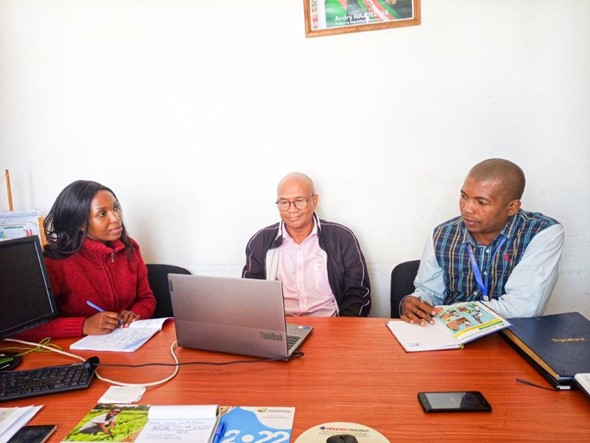
Where did you go on deployment?
I went to Jordan and Madagascar. In Jordan, I was supporting Syrian refugee operations via the Cash Working Group (CWG) by updating the CVA risk matrix and doing the CVA PDM data analysis, which provided some recommendations for future operations. In Madagascar, I was also working with Cash Working Group in developing the Cash and Voucher Assistance Standard Operating Procedures for cyclone and Flood Response.
These were my first deployments and my first contact with different humanitarian CVA actors; it was interesting, to meet with CVA experts for Syria humanitarian actors who were doing more CVA response. With deployments, I learnt about CVA coordination to large scale emergencies, and how to link humanitarian CVA to government social protection.
In addition, it extended my network by joining other CVA platforms and groups such as MIC (Market in Crisis Community) and CashCap (Cash Capacity).
Tell me about your best moment on the CPDP program
- My first interaction with my CPDP peers at the start of the program was memorable. I enjoyed getting to know them and sharing our experiences. We are still in touch!
- The opportunity to be exposed to the new environment through deployment! With this, I got to learn practice how CVA can be used in a different context, how CVA is coordinated in complex emergencies with different humanitarian actors, as well as how to do a CVA risk matrix and risk analysis.
What advice do you have for someone new to the program?
- First, it is better to be clear with the objective of why you want to join CPDP.
- Second, CVA is evolving and getting large with some innovations in different components, so do not get tired! Take time to rest and enjoy learning.
- Third, be in touch with your mentor, ask for advice, and share your thoughts.
- The deployment is key to cementing your learning on cash. However, you will need to keep practicing these new skills once you leave the program gained as otherwise, they will slip your mind!
Tell me about life after the program
I started using the CPDP skills even during the learning period when I was working for Rwanda Red Cross, whereby CVA started getting implemented in other programs related to WASH and Livelihood.
By now, with the Project financed by the Netherlands Red Cross, I am technically supporting the capacity building of the South Sudan Red Cross in disaster preparedness and Response including the CVA preparedness as a component for the National Society to be Cash Ready

What do you see for the future of cash?
Looking at CVA community feedback, the increased users of CVA as a response modality including governments’ Social Protection Programs, and given the fact that CVA is getting used in different sectors WASH, Health, etc, CVA will occupy a high percentage in humanitarian response compared to in-kind/Cashplus. Also, as CVA is evolving, some investments in CVA learning are still a need to increase the number of staff with CVA skills and expertise. In addition, good inter-agency coordination will continue to be the key to success for operations with CVA as a response modality.
Any final thoughts?
Cross-cutting themes, such as Community, Engagement, Accountability (CEA), and Protection, need to be considered when designing a CVA program for effective operations. It has been reported that there are some differences in how different categories of households (households with women, people living with disabilities, etc) spend the money they are given to tailor to their specific needs.
This blog series will focus on the highlights from different Cash Practitioner Development Programme graduates, allowing practitioners to share what they have learnt and experienced during their Cash School learning deployments.
The Cash Practitioner Development Programme aims to expand the ready pool of cash experts available to deliver humanitarian cash assistance, and to strengthen the community of qualified practitioners with up-to-date skills in all areas of cash assistance. Cash deployments are a key element of participants learning schedules, these deployments aim to enhance skills and confidence in implementing cash based assistance. Some deployments are run in partnership with NORCAP, with practitioners accessing deployment opportunities from a range of humanitarian agencies.
Meet Fredrick Orimba from Our 2021 Cash Practitioner Development Programme!
Frederick Orimba, a then staff member at the Kenya Red Cross Society and now Technical Lead for Cash and Voucher Assistance (CVA) and Social Protection at the German Red Cross, reflects on his journey with CVA and offers advice to others considering applying to join the Cash Practitioner Development Programme (CPDP).

Why did you decide to start working in cash?
I began working with the Kenya Red Cross first as a Regional Health Coordinator and later as a Regional Disaster Management Officer. When the International Federation of the Red Cross (IFRC) visited Kenya in 2012 to roll out training on Cash Transfer Programming (CTP), as it was called then, I was excited to be selected to represent the West Kenya Region. However, my team at the time did not understand the concept of cash and thought it was a financial and accounting training. They instead felt that a staff member from the finance department was best suited to attend the training. The training made us all realise that cash isn’t simply related to finance, but a tool for providing cash to support people in crisis. After completing follow up assignments from the training, the region received funding to implement cash transfers using mobile money in flood responses in West Kenya. The project was very successful and contributed to knowledge evidence on the effectiveness of cash.
Why did you choose to undertake the Cash Practitioner Development Programme (CPDP)?
Having done most of the technical cash courses out there, both online and face-to-face trainings including the Practical Emergency Cash Transfer (PECT) training, I was looking for other opportunities to further develop my skills through higher level training and coaching and to gain cash experience in different contexts beyond Kenya. I heard about the CPDP programme through someone in Kenya and made a commitment to join the next cohort to grow my cash programming skills and network to develop myself further. I thought: “this programme is something I need”. I made an application and luckily, I was selected.
Where did you undertake a deployment?
I did my deployment learning in Turkey from 17th June to 30th August 2021. The Turkish Red Crescent has the largest cash programme for social protection, the Emergency Social Safety Net (ESSN). I learnt a lot from the massive Kizilaykart cash project!

Tell me about a few of your highlights from the CPDP programme.
- My mentor really kept me on my toes. It was not always easy to balance work and the programme so my mentor was a huge help. We had some great moments together and we learnt a lot from each other!
- I loved being deployed to Turkey. I had been looking for deployments for ages. I got to see how people do Cash outside of Kenya.
- The alumni meetings have been great. I was always happy to know I could reach out to someone if I needed to ask questions.
What advice do you have for someone new to the programme?
Any serious CVA expert looking for an opportunity to advance their CVA skills should enroll in this programme. The programme takes learners through practical learning by applying and implementing CVA in real time scenarios giving participants an opportunity to gain experience, insights and technical expertise that is not attainable in a conventional classroom setting or online. It also provides an opportunity to connect with other CVA experts in other parts of the globe for peer-to-peer learning. It is not as easy as just joining. You need to plan your time well because you need to complete everything within one year.
What difference has the CPDP made to you and your career?
Apart from building my skills and capacity in CVA, it has improved my CV. Not many people can say they have gone through a year–long training in cash. It has given me a step up in the field of CVA.
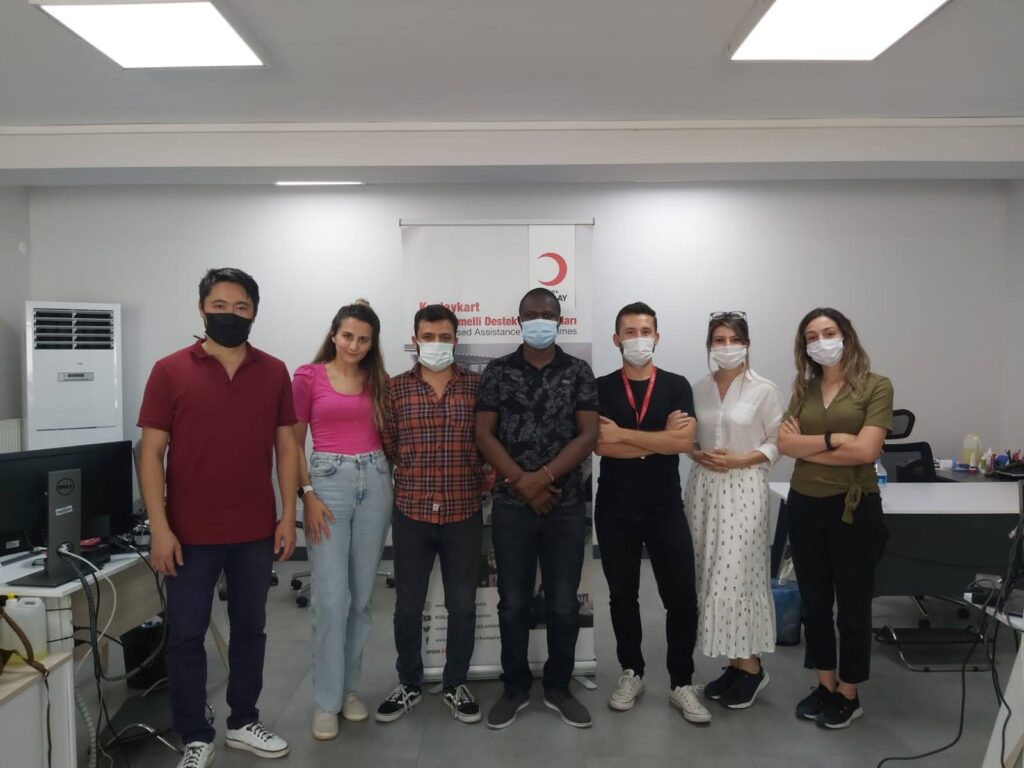
What difference has it made for the National Society (NS)?
- When you build staff capacity, you are building the capacity of the NS as covered in the CVA preparedness pillars of a NS. When I returned from my deployment, I made proposals to my head of department about how we can improve CVA programming in the NS. We hired a staff member to work in Cash Information Management, which really improved our programming in the use of cash and projects.
- The skills I have gained are helping me a lot in my current work and simultaneously my former NS among others have benefitted from it as we are supporting them as a Partner National Societies.
Any final thoughts?
Cash and Voucher Assistance (CVA) usage seems to be reaching a plateau. Some people are still reluctant to use cash and this is a discussion that needs to be pushed for us to continue contributing to our target. By 2025, the IFRC commits to deliver 50% of humanitarian assistance through the use of cash and vouchers. This can only be achieved through sustainable advocacy for and use of cash and vouchers among RCRC Movement partners.
This blog series will focus on the highlights from different Cash Practitioner Development Programme graduates, allowing practitioners to share what they have learnt and experienced during their Cash School learning deployments.
The Cash Practitioner Development Programme aims to expand the ready pool of cash experts available to deliver humanitarian cash assistance, and to strengthen the community of qualified practitioners with up-to-date skills in all areas of cash assistance. Cash deployments are a key element of participants learning schedules, these deployments aim to enhance skills and confidence in implementing cash based assistance. Some deployments are run in partnership with NORCAP, with practitioners accessing deployment opportunities from a range of humanitarian agencies.
Meet Hortense Sombie from Our 2022 Cash Practitioner Development Programme!
Hortense Sombie, from our Cash Practitioner Development Programme (CPDP) in 2022, reflects on her journey with cash, the highs and lows of the programme and offers advice to others considering applying to be a CPDP alumni.
When did you first hear about the use of cash and voucher assistance (CVA)?
In 2005, I heard about a cash programme in Niger. I found the concept of giving people money quite strange. However, after giving the idea some thought, I put myself in their shoes and thought: “would I prefer to get cash and buy what I need or for people to give me things they think I need? I decided it makes more sense to get money for what I need and when I need it”.

What are some of the main highlights from your time on the CPDP programme?
- Going on deployment to Guinea Bissau and Cape Verde.
- Learning lots of new skills from my mentor!
Have you noticed any changes since leaving the programme?
My perspective used to be narrow but with the Cash School it opened my mind to a different way of seeing how we can use cash. The people I worked with made it clear that you need to understand cash before using it.
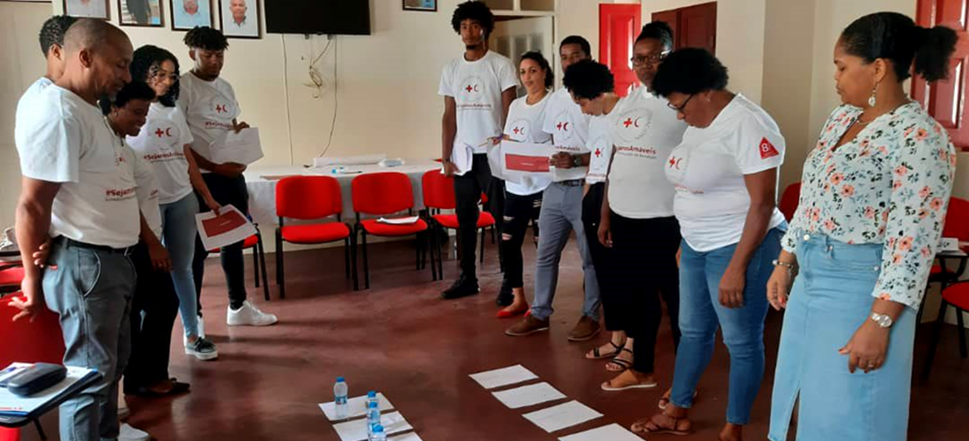
What difference has your time at the CPDP made to your organisation (Burkinabé Red Cross)?
The work in the cash school has helped my National Society (NS) a lot. Before we would address cash without knowing where to get the appropriate tools from. However, when I returned home, I was happy to be able to provide support and advice to people on where to find solutions or help with solving a cash problem. I realised that: “This is the purpose of the cash school: to make us confident in supporting our region and NS!”.
What was the hardest part of taking part in the CPDP programme?
I took part in the programme during Covid-19 and because of this my group did not bond as easily as normal. Whilst this made me sometimes feel lonely, I felt I could always rely on my mentor.

What advice do you have for someone new to the programme?
- Do the learning activities right at the beginning as this will benefit you in the long-run – don’t leave it until later!
- Try to link up with other students from the start.
Would you recommend the programme to other people?
Yes, definitely. It is a very good programme and I have been impressed by the quality of the programme and the subjects involved. I don’t think there are any other programmes like it in the Movement!
For any other questions regarding our next Cash Practitioner Development Programme please contact the Cash School on Cashschool@redcross.org.uk
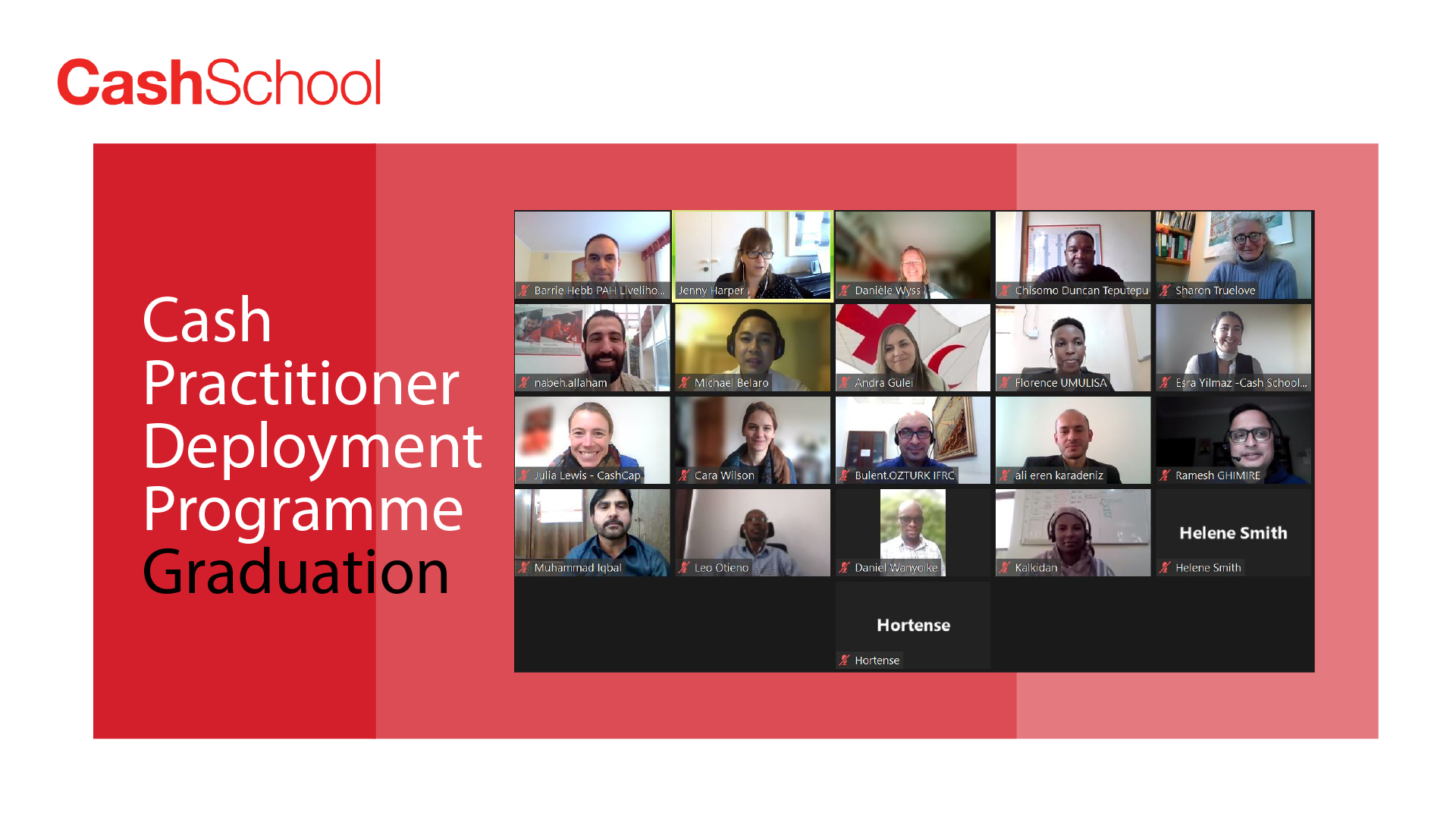
The Cash Hub is delighted to celebrate the new Cash School 2022 Graduates!
This week the cash experts joined a final call to celebrate their achievements and hard work. Exposure to new contexts, new organisations and cash coordination mechanisms through deployments to Turkey, Philippines, Iraq, South Sudan, Madagascar, Nigeria, Pakistan and Sahel have all contributed to expanding practitioners’ confidence and competence. Learning activities included working with expert mentors, real-time research projects, seminars, training, and accreditation.
Congratulations go to Chisomo Duncan from Malawi Red Cross, Daniele Wyss from ICRC, Ramesh Ghimire from Nepal Red Cross, Nabeh Allaham from Syrian Arab Red Crescent, Florence Umulisa from German Red Cross, Muhammad Iqbal from Pakistan Red Crescent and Tom Norman from NORCAP who will join the group of Cash School Alumni.
Normally the program requires an ex-pat to support cash activities. But now I am doing it – all the experience I have is based on the cash school! All the communication, the coordination.
– Cash School Member
About the Cash School
The CPDP aims to expand the ready pool of cash experts available to deliver humanitarian cash assistance, and to strengthen the community of qualified practitioners with up-to-date skills in all areas of cash assistance. Cash deployments are a key element of participants learning schedules, these deployments aim to enhance skills and confidence in implementing cash based assistance. Some deployments are run in partnership with NORCAP, with practitioners accessing deployment opportunities from a range of humanitarian agencies. You can read more about the programme here
Watch the video below to see highlights from the programme
This short survey, created by CALP Network, is designed to collect the views of people whose work touches on humanitarian Cash and Voucher Assistance (CVA), in relation to issues such as scaling CVA, quality, risk and multi-purpose cash.
The survey is available in Arabic, French, English and Spanish and should take no more than 15 minutes to complete. The data gathered will inform the next State of the World’s Cash report which will be published in 2023.

The current crisis in Ukraine has shocked us all and resulted in a huge outpouring of solidarity and support. Rightly as humanitarians, and as custodians of the Fundamental Principle of humanity, we want to deliver assistance that supports people’s dignity and choice at the scale and speed that is needed.
Now more than ever, perhaps it is easier for us to understand what a cash first or default approach is. Markets are functioning across the crisis and all the countries affected (except for some areas of eastern Ukraine) and more importantly people are used to a cash economy. So why have we not been able to deliver cash within hours linked to well-established safety nets systems for those fleeing their homes? Why have we continued to deploy a goods-first approach?
We have chronically under-invested in humanitarian cash delivery; in National Societies, whose leadership needs to continuously commit to the organisational change required, deepen existing partnerships and ways of working with external stakeholders; in the systems and prepositioning of cash to enable strong and capable cash ready first responders; in the surge system, which provides support when national capacities are overwhelmed; and in the people and competencies that are needed.
For too long we have tried to adapt our existing systems for in-kind to cash, because cash ‘is easy’; because we focus on sectoral outputs rather than outcomes and impact; and because ultimately, we are failing to be driven solely by people’s needs and preferences. We need new operational models fit to deliver cash that place people at the centre and we need to shift investment to enable this to become a reality.
The Movement response is starting to deliver emergency cash in the surrounding countries, which requires simultaneously building National Society commitment and competence, data sharing protocols with a range of external stakeholders, self-registration applications, community messaging and feedback mechanisms as well as how to physically deliver cash into people’s hands, of course. We should be proud of this as it is a testament to those cash experts (well done BRC for supplying 14 such experts to date!) who have been advocating to their National Society peers to take up a modality that is new for the majority, at the same time as coordinating externally and internally and designing and implementing the response. The picture in Ukraine is somewhat more complicated.
Learning will start to be captured in real time but let this be a lesson to all of us that we must commit to do better. We need to build a new way of working that enables prepositioning of National Society leadership commitment to integrating Cash & Voucher Assistance (CVA) and sustainable capacities and a fit for purpose surge system that can and will deliver cash within 48 hours to, say, 500,000 families. To do anything less would mean we are not learning the lessons right in front of us.
The original article is published on the IFRC website.
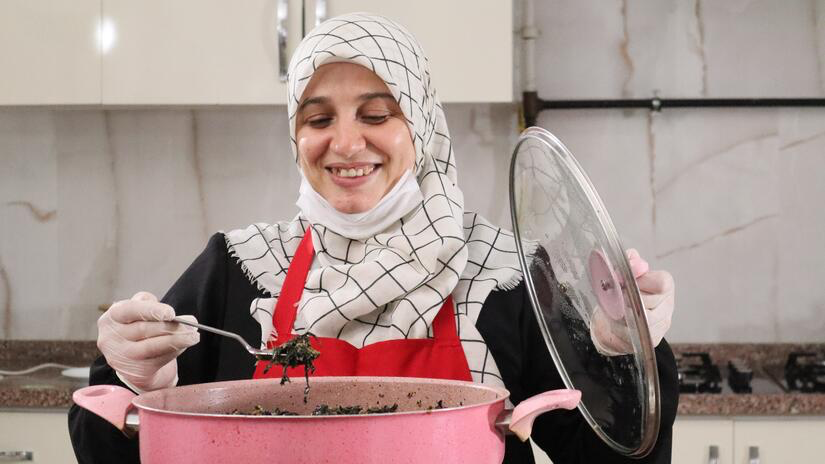
The world is facing record levels of people forced to flee their homes due to violence, insecurity, and the effects of climate change (UNHCR 2021). Many cannot return home and face the new overwhelming reality to resettle and rebuild somewhere from zero. As is the case for many protracted crises, how do we face the challenge of responding to the urgent needs while also the long-term solutions to help improve lives for the years to come?
By Deniz Kacmaz, IFRC Turkey, Livelihood Officer
Turkey is hosting the largest refugee population in the world. More than 3.7 million Syrians have sought refuge as well as 330,000 under international protection and those seeking asylum, including Iraqis, Afghans, Iranians, Somalis, among others. With the conflict in Syria now entering its twelfth year with few signs of change, means that we are not just looking at a humanitarian emergency anymore, but on long-term resilience.
Since the refugee influx began in Turkey, the Turkish Red Crescent (Türk Kızılay) has been taking a leading role in the response. As of April 2020, Turkish Red Crescent through its KIZILAYKART platform and IFRC run the largest humanitarian cash programme in the world, the Emergency Social Safety Net (ESSN), funded by the EU.
This programme has helped more than 1.5 million cover some of their most basic needs, covering their groceries, rent and utilities, medicine and their children’s school supplies.
But humanitarian emergency cash assistance can only go so far. There is also a need to focus on longer-term resilience. This is why we are working on both the urgent needs of refugees, while also supporting longer-term livelihood opportunities for refugees and host communities.
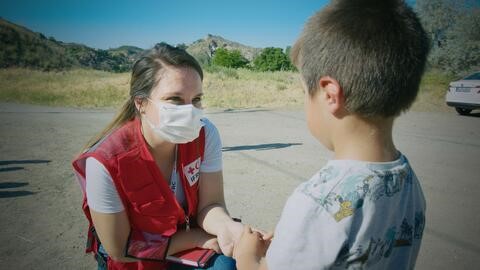
Photo: IFRC
From humanitarian cash to longer-term resilience
We are working on both the urgent needs of refugees, while also supporting longer-term livelihood opportunities for refugees and host communities. This means being part of the labour market to meet their own needs and rebuild their life without depending on social assistance, including the ESSN.
We must focus on long-term solutions where refugees, supported by the ESSN, gain their power to stand on their feet and become self-reliant again.
I have been working at IFRC Turkey Delegation for almost two years helping identify gaps and find opportunities to empower people’s socio-economic capacities. This approach helps ensure they are resilient in combating challenges in the future, including the devastating socio-economic impacts brought on by the COVID-19 pandemic and general obstacles around employment opportunities.
We have seen in many contexts when refugees are able to build their resilience and self-sufficiency, they can contribute even more meaningfully to the local economy. When they benefit, we all benefit, including host communities.
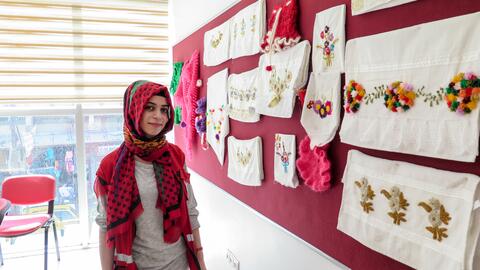
What are we doing to bring this long-term solution to the lives of refugees?
As of April 2021, we have launched referrals that link people receiving cash assistance through ESSN with a plethora of livelihood trainings and opportunities in Turkish Red Crescent community centres.
The 19 community centres across Turkey offer support to both refugee and host communities, including work permit support, vocational courses such as sewing; mask producing; various agricultural trainings; and Turkish language courses and skills trainings. These services are critical to breaking barriers in the local markets. The community centres connect skilled individuals to relevant job opportunities by coordinating with public institutions and other livelihood sector representatives.
The ESSN cash assistance provides support to refugees in the short term while giving them opportunities to learn new skills, which can lead to income generation in the long term.
How do we conduct referrals from the ESSN to livelihoods?
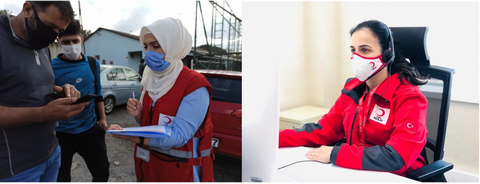
There are many sources where families are identified for referrals, some of the most common are:
- Turkish Red Crescent (Türk Kızılay) Service Centre
- 168 Kızılay Call Centre
- Direct e-mail address to the TRC referral and outreach team
- Identified potential individuals among ESSN protection cases
- Field teams including monitoring and evaluation and referral and outreach teams who are regularly engaging with those benefitting from ESSN
In the first months of combining cash assistance with longer-term programmes, we have supported more than 1,000 refugees.

Some have been referred to employment supports including consultancy for employment and work permit support, while others are attending language courses, vocational trainings, and skills development courses through public institutions, NGOs, UN agencies and TRC’s community centres.
Though we have developed a robust livelihood referral system, collectively, we need to make stronger investments in social economic empowerment in the future.
While we continue to work on improving our programming and referral mechanisms, as IFRC, we are also reaching out to agencies, civil society, donors, and authorities to look at how we can:
- increase investment in socio-economic empowerment in Turkey,
- mitigate barriers to employment for refugees, and
- create greater synergies between humanitarian and development interventions.
It is this collective effort that will deliver the longer-term gains necessary for both refugee and local communities in Turkey to thrive.
—
The ESSN is the largest humanitarian cash assistance program in the world, and it is funded by the European Union. The ESSN has been implemented nationwide in Turkey in coordination and collaboration with the Turkish Red Crescent and International Federation of Red Cross and Crescent Societies (IFRC). We reach more than 1.5 million refugees in Turkey through the ESSN, and we give cash assistance to the most vulnerable populations to make sure they meet their basic needs and live a dignified life.
The Turkish Red Crescent with its 19 community centres throughout Turkey supports millions of refugees as well as host communities. The Centres provide several courses, vocational trainings, social cohesion activities, health, psychosocial support, and protection services, among others.
This blog series will focus on the highlights from different Cash Practitioner Development Programme deployments in 2021, allowing practitioners to share what they have learnt and experienced during their Cash School learning deployments.
The Cash Practitioner Development Programme aims to expand the ready pool of cash experts available to deliver humanitarian cash assistance, and to strengthen the community of qualified practitioners with up-to-date skills in all areas of cash assistance. Cash deployments are a key element of participants learning schedules, these deployments aim to enhance skills and confidence in implementing cash based assistance. Some deployments are run in partnership with NORCAP, with practitioners accessing deployment opportunities from a range of humanitarian agencies.
Name : Danièle Wyss
Job title : Cash & Market Specialist – ICRC
Where were you deployed : Deployed to work with the Turkish Red Crescent (Ankara & Gaziantep)
What type of work did you complete as part of the deployment?
During the deployment I worked with the TRC’s Coordination and Project Coordination teams, the deployment aimed to provide experience in strategic CVA coordination, including the ESSN taskforces and coordination mechanisms under the Regional Refugee and Resilience Plan (3RP). I participated in their Basic Needs and CBI Working Group meetings.
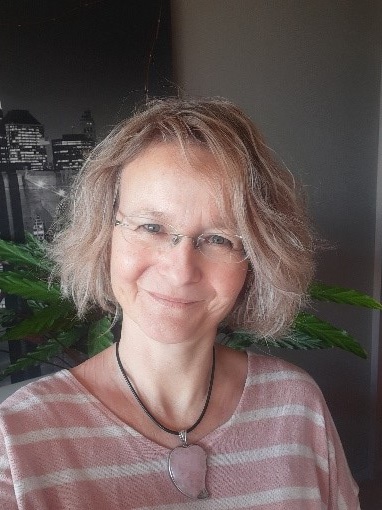
I wrote a comprehensive paper on what is KizilayKart, how it works and what makes it such a success. It contains background information on the crisis, the Turkish Red Crescent, the registration process, the current and completed programes, the seven KizilayKart workflows/units, the internal and external coordination mechanisms, links to relevant websites, platforms etc and an ‘interview’ section resulting from my field trip to Gaziantep and Ankara where I was able to ask many questions about the process as a whole.
What have you learned most about?
My key learnings were:
- Good coordination between humanitarian actors and all stakeholder is possible
- Unless there is political will, no matter how much inter-agency coordination and how good it is, the response will not be a success
- AAP/CEA is essential for beneficiaries and non-beneficiaries alike but also for host-communities, staff and volunteers
- For such a response to be successful and to avoid unnecessary tension, the host community must be included in the process and the assistance
What was a ‘stand out’ moment for you on your deployment`?
For me it was definitely the field trip to Gaziantep where I was able to witness first hand all the work done by the TRC. We had the opportunity to speak with various departments from the Gaziantep ESSN office, visit a Community Centre and a Service Centre. We were able to interview numerous people, such as:
-> M&E field team
-> M&E Operators team
-> Call Centre team
-> Outreach team
-> In-camp Management team
-> Deputy coordinator
-> Community Centre team
-> Service Centre manager
It is quite impressive to see everyone’s dedication but also the variety of different nationalities working on the projects. A substential number of colleagues have been involved from the start of the crisis and worked in various departments/workstreams of the TRC and the KizilayKart project. Quite a few have themselves gone through the whole process, which means that they have a deep understanding and knowledge of all the programmes and know how to best address people’s queries and/or worries.
Author: Maja Tønning, Regional CVA Coordinator, IFRC Africa
The IFRC in the Africa Region has coordinated the launch of an online Cash Community of Practice (CoP) for all African National Societies (ANS), now live on the Cash Hub platform. The online CoP seeks to connect all ANS and their partners and to strengthen peer learning and sharing. This online cash CoP will also host the Africa Cash Roadmap 2022-25 which is structured around National Society priorities and ongoing efforts and experiences in Cash and Voucher Assistance (CVA).

The Cash Roadmap and the online Cash CoP were based on consultations with 72% of African National Societies as well as the engagement of regional and global IFRC staff and partners, including ICRC, supporting CVA in Africa. In total, around 500 answers to challenges and opportunities were collected.
Great initiative, and really impressive to hear how many African NS have been involved in defining the needs.
PNS representative during the review session
The Africa Cash Roadmap consists of several related and integrated parts:
- A PDF which is an overall introduction to the Cash Roadmap and a narrative to use with partners, for fundraising and for external communication.
- The online Cash Community of Practice (CoP) for African National Societies, which can be accessed clicking on this link.
- The online Cash Roadmap outlining National Society priorities for CVA on an annual basis. Click here to access a web page dedicated to the Africa Cash Roadmap.
- An online Kobo survey, which feeds into the online Cash roadmap and specific action plans for National Societies in Africa.

Jordane Hesse who worked as a consultant on developing the Africa Cash Roadmap stated:
When the Movement established a CVA objective at 50% by 2025*, with 49 National Societies and many Partner National Societies having different starting points and challenges, an interactive roadmap became a must to support each ANS in scaling CVA, targeting qualitative and efficient interventions. The tool developed is a response to what the field voiced. It aims to support, facilitate, inspire each one of them, and will evolve over the next 4 years.
*the assistance delivered directly to households, i.e. between in-kind and CVA, excluding services
The online Cash CoP will be updated on a continuous basis and French translations will be available in early 2022. If any National Society or Partner has specific updates to share on CVA for the Africa Region, feel free to reach out to Maja.Tonning@ifrc.org and we can post these on the online Cash CoP as well.

